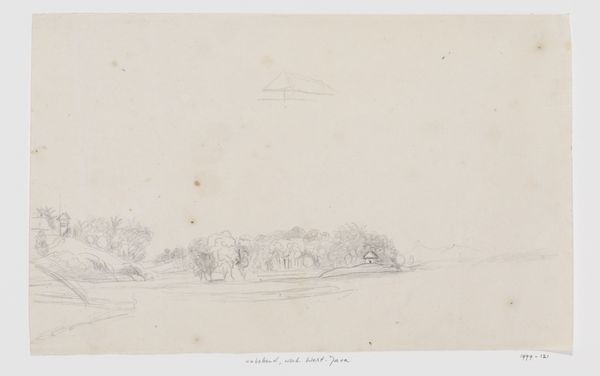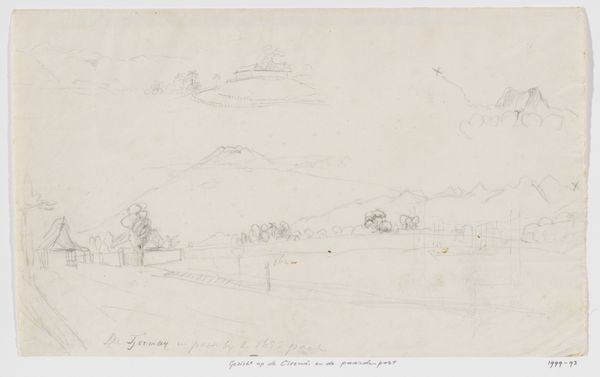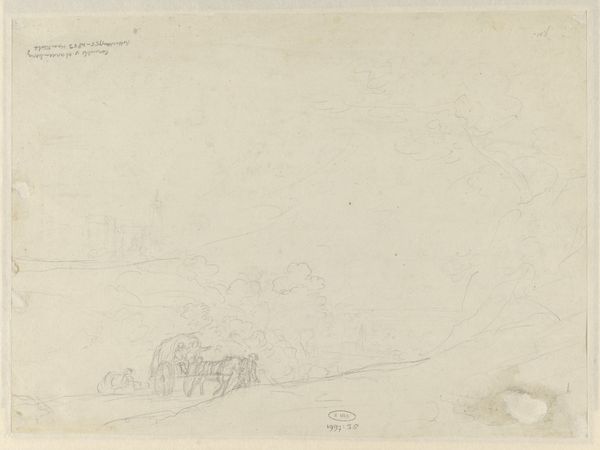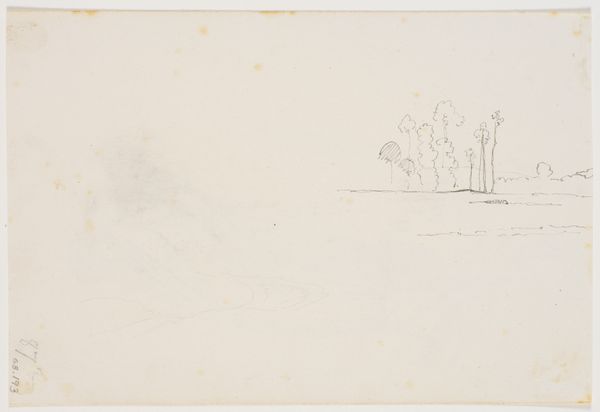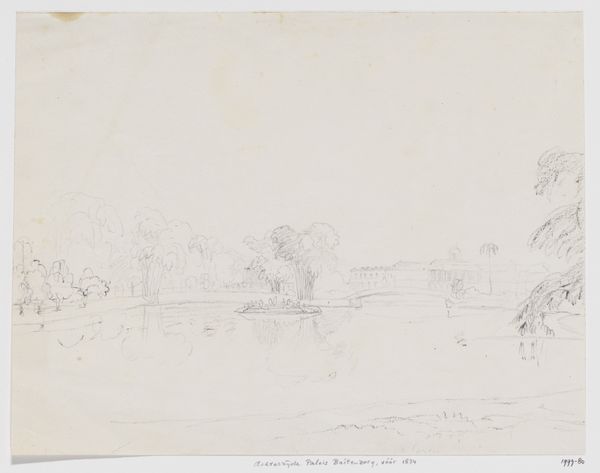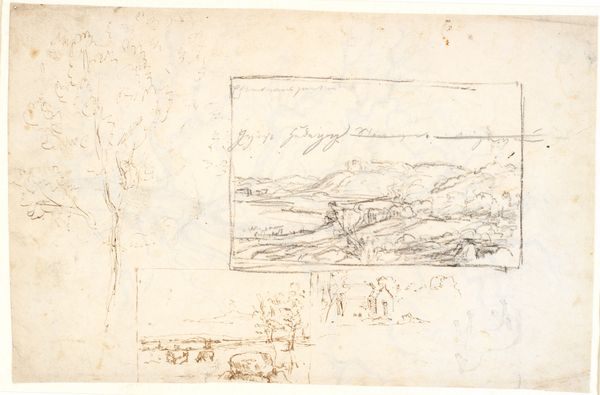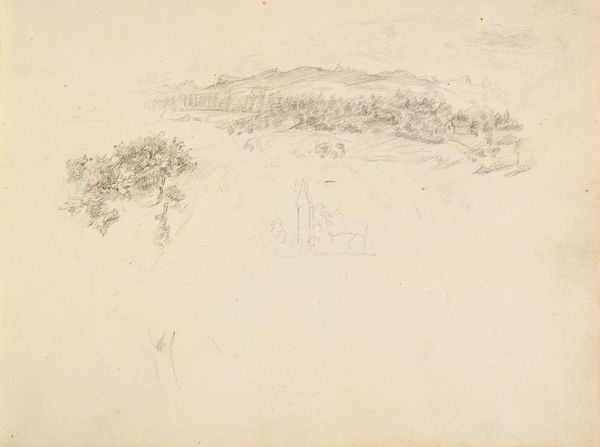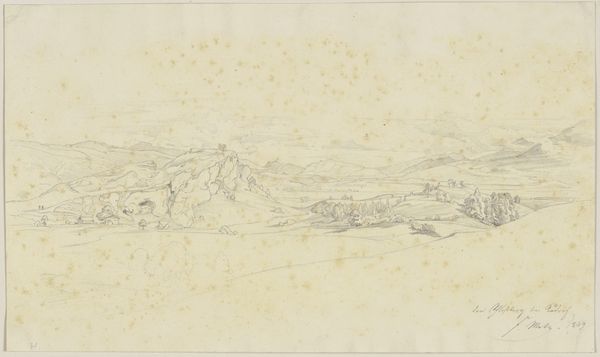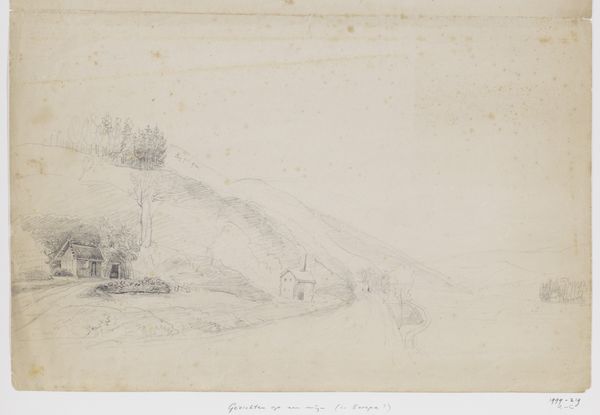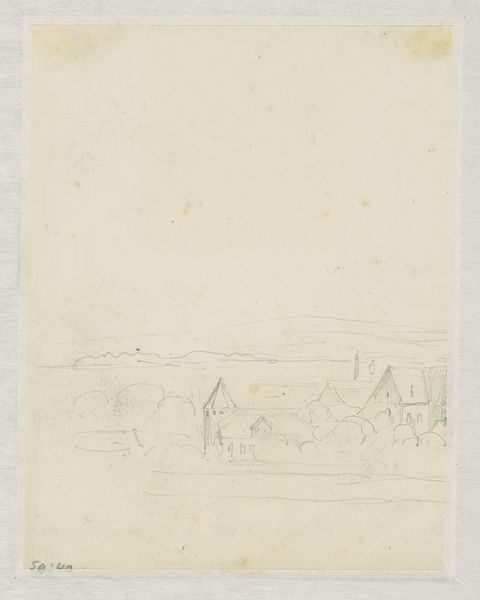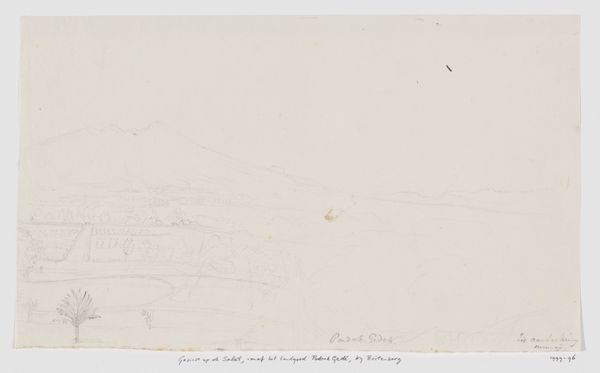
drawing, pencil
#
drawing
#
landscape
#
indigenism
#
pencil
#
orientalism
#
realism
Dimensions: height 111 mm, width 180 mm
Copyright: Rijks Museum: Open Domain
Curator: This is "West-Javaans landschap" a pencil drawing by Adrianus Johannes Bik, made sometime between 1816 and 1846. It's part of the Rijksmuseum collection. Editor: My first thought is quietude. The pale pencil strokes evoke a sort of hazy, dreamlike recollection of a landscape. There's a stillness about it. Curator: Indeed. Bik, active during a period of intense Dutch colonial presence in Java, positions this landscape within both Orientalist and nascent Indigenist artistic trends. He emphasizes the perceived exoticism and romanticism, certainly, but there is a visual accuracy to Javanese landscapes. It begs the question: for whom was Bik producing this drawing? Editor: The "Gede" inscription intrigues me. Is that the mountain range looming in the background? Mountains, as we know, often symbolize transcendence, spiritual challenges, or a connection to something larger than oneself. I'm curious about the weight it carries in the cultural imagination. Curator: I believe it does reference the Gede Pangrango National Park. Bik may be drawing on its established symbolic significance within the Javanese culture to depict its strength. The gaze is presented with its natural beauty, sure, but more than this, its perseverance under a new Dutch administration is profound. Editor: So, even within what seems like a straightforward landscape, we see encoded elements of resistance? I'm drawn to consider it as more than simply scenic, but rather a potentially layered depiction of a people and place navigating colonization. Curator: Precisely. This drawing can act as a silent document of the time, encapsulating the intricate dynamics of power and representation, colonial exploitation and orientalism. Even in its quietude, the artwork allows for powerful dialogue. Editor: Yes, viewing it now, I recognize an art historical echo of the ongoing negotiation with external narratives on cultural identity. It moves from quiet contemplation to reflective activism for me. Curator: A valuable interpretation. It reinforces how deeply contextual understanding can alter the way we respond to and discuss art history. Editor: Absolutely, bringing art history together with contemporary intersectional issues reveals new levels of understanding, even from the briefest of sketches.
Comments
No comments
Be the first to comment and join the conversation on the ultimate creative platform.
